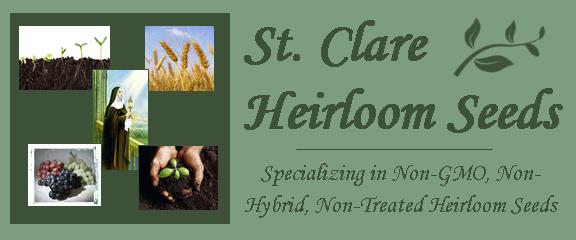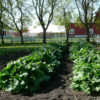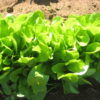Description
Pak Choi White Stem Chinese Cabbage (A.K.A. Bok Choy, Milky Dwarf, Chinese Celery Cabbage, Chinese White Cabbage, Mustard Cabbage, Bai Cai, Xiao Bai Cai, Shakushi-na, Taisin, Pak Choy, Pak Choi, Bok Choi, Chinese Mustard, Spoon Cabbage)
100 Seeds per pack
Days to Maturity: 45–50 Days
Sun Requirements: Full sun; tolerates light shade in hot climates.
Botanical Name: (Brassica rapa)
Cherished for centuries in the Chinese cuisine, this leafy brassica has traveled far from its origins, gaining popularity around the world under many names. A staple in traditional stir-fries and broths, its cool-weather tolerance and quick maturation have made it a gardener’s favorite.
Pak Choi thrives in full sun to part shade and grows best in cool weather, standing up well to light frost and even mild winters. Plants reach 12–18″ tall and produce 10–14 upright, snow-white stalks, each 8–10″ long and weighing up to 5 lbs. Broad, spoon-shaped green leaves contrast beautifully with the thick white, juicy stems. The flavor is mild with a hint of mustard, and a sweet, peppery undertone.
Use fresh in salads, braised with garlic and soy, or tossed into hot soups and noodle bowls. The crunchy stems and tender leaves absorb flavors beautifully and cook quickly.
Stores well in the fridge for up to a week. Rich in vitamins C, K, and A, as well as fiber, calcium, potassium, and folate, this fast-growing variety is both nourishing and productive.
Planting Instructions for Pak Choi White Stem Chinese Cabbage Seeds
When to Plant:
Pak Choi (also called Bok Choy) grows quickly and is best planted in cool weather. Start seeds indoors 3–5 weeks before your last spring frost, or direct sow in early spring as soon as soil can be worked. For a fall crop, sow seeds directly 6–8 weeks before your expected first frost. In mild climates, it can also be grown in winter with protection.
How to Start Indoors:
Sow seeds ¼″ deep in trays or cells filled with a fine seed-starting mix. Plant 2–3 seeds per cell and thin to the strongest one after germination. Keep seedlings under bright light and maintain even moisture. Transplant when they have 3–4 true leaves and are about 3–4″ tall.
Hardening Off & Transplanting:
Harden off seedlings 7–10 days before transplanting. Choose a sheltered site with full sun to part shade and fertile, moist soil. Space plants 6–8″ apart for full-sized heads or 4″ apart for baby Pak Choi. Rows can be spaced 12–18″ apart.
Direct Sowing:
Sow seeds ¼–½″ deep and 4–8″ apart depending on desired head size. Thin to final spacing once true leaves appear. Keep soil consistently moist for best germination and growth.
Growing Tips:
Pak Choi thrives in rich, well-drained soil with steady moisture. Use compost at planting and side-dress with nitrogen-rich fertilizer 3–4 weeks later. Mulch to retain moisture and keep roots cool. Avoid hot weather, which causes bolting.
Pest Management:
Flea beetles and cabbage worms are common threats. Use floating row covers early on and inspect leaves regularly. Aphids may also appear—spray with a gentle jet of water or use insecticidal soap if needed.
Diseases to Watch For:
Downy mildew and damping off can affect seedlings. Ensure good airflow, avoid overhead watering, and rotate crops to minimize disease.
Harvesting:
Harvest whole heads when they reach 8–12″ tall, or harvest outer leaves for a cut-and-come-again approach. Pak Choi is tender and best picked young for optimal flavor and texture. To help prevent slpitting and cracking, cut some of the roots or the base of the plant to reduce water uptake.
Storage:
Pak Choi is best used fresh but can be stored in the refrigerator for up to 1 week in the refrigerator. For longer storage, blanch and freeze or pickle.
Seed Saving:
Pak Choi is a biennial but often bolts in its first year under stress. Let healthy, true-to-type plants flower and form seed pods. Harvest when pods are dry and brittle. Thresh, clean, and store in a cool, dark, dry place. Seeds remain viable for 3–5 years. Use our seed-saving envelopes for convenient labeling and storing. Isolate from other brassicas to maintain purity.
FAQ:
What is the historical or notable background of Pak Choi White Stem Chinese Cabbage?
Pak Choi White Stem Chinese Cabbage has been cherished in Chinese cuisine for centuries and is known by many names worldwide, including Bok Choy and Bai Cai. Its popularity has spread globally due to its versatility, fast growth, and adaptability to cooler climates.
How would you describe the flavor of Pak Choi White Stem Chinese Cabbage?
The flavor of Pak Choi is mild with a gentle mustard note and a sweet, peppery undertone. The crisp white stems and tender green leaves soak up flavor beautifully and offer a satisfying crunch.
What does Pak Choi White Stem Chinese Cabbage look like, and what are its growing habits?
Pak Choi grows upright to 12–18″ tall with snow-white stalks about 8–10″ long. It features broad, spoon-shaped green leaves and thrives in cool weather, withstanding light frosts and mild winters.
How and when do I harvest Pak Choi White Stem Chinese Cabbage?
Harvest whole heads when they reach 8–12″ tall or pick individual leaves for continual harvesting. It's best to harvest it young for tender texture and optimal flavor.
When is the best time to plant Pak Choi White Stem Chinese Cabbage?
Pak Choi thrives in cool weather, making early spring and late summer ideal planting windows. Start seeds indoors 3–5 weeks before your last frost or direct sow as soon as soil is workable. For a fall crop, sow seeds 6–8 weeks before your first expected frost. In regions with mild winters, it can even be grown during the colder months with adequate protection.
What are the common culinary uses for Pak Choi White Stem Chinese Cabbage?
Pak Choi is very versatile in the kitchen—ideal for stir-fries, broths, soups, and noodle dishes. It also works well fresh in salads or lightly braised with garlic and soy.
What’s the best way to store Pak Choi White Stem Chinese Cabbage after harvest?
Pak Choi is best enjoyed fresh but can be stored in the refrigerator for up to a week. Wrap it in a damp towel or place it in a plastic bag to retain moisture. For longer preservation, it can be blanched and frozen or even pickled.
What nutrients does Pak Choi White Stem Chinese Cabbage provide?
Pak Choi is packed with vitamins A, C, and K, along with fiber, calcium, potassium, and folate—making it both a nourishing and flavorful addition to your meals.
Does Pak Choi White Stem Chinese Cabbage have any notable disease resistance?
While not known for specific disease resistance, Pak Choi can be protected from downy mildew, bolting and damping off with good airflow, crop rotation, and avoiding overhead watering.


















James Gracey (verified owner) –
Haven’t grown them yet but look forward to a fall planting and harvest
sammy w. (verified owner) –
Didn’t do well.. not sure why.
Sarah C. (verified owner) –
Shipping was quick and packaging was nice!
Sharon Schaller (verified owner) –
Love the long white stems to use both the stems and greens in chow mien.
Hazel Hardisty (verified owner) –
Excellent!